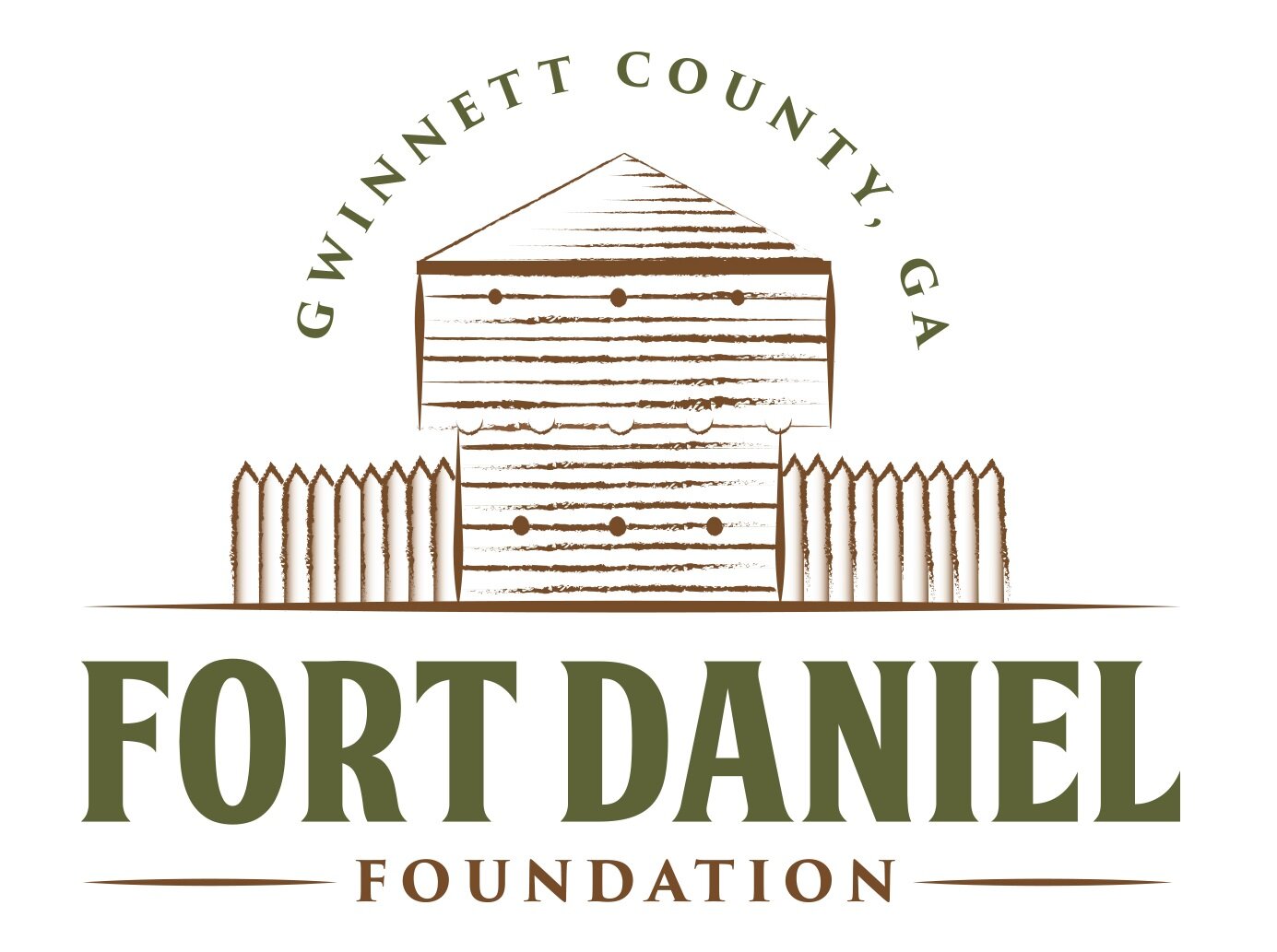
The Fort Daniel Historic Site and Archaeological Research Park is a permanent archaeological research preserve owned by Gwinnett County and available to researchers, historians and educators. The Fort Daniel Foundation is responsible for development of the site and programming. The mission of the Foundation is:
Teach the value of our cultural heritage, particularly as it is contained in archaeological sites
Train and mentor archaeology students
Providing public archaeology opportunities
Maintaining a field laboratory where artifacts will be processed and conserved
Create a field museum where artifacts and interpretive displays will be exhibited for the public
About Fort Daniel
First built sometime in the early 19th c. (best estimate is about 1806), “the fort at hog mountain”
was originally a frontier fort located near the juncture of two treaty lines that separated the early
settlers from the Cherokee to the west and north, and the Creeks to the west and south. The
location of the fort was in the southwest corner of Jackson County, which became part of
Gwinnett County in 1819. Therefore it is believed to be the Gwinnett’s oldest historic site.
During the Creek Indian War (an extension of the War of 1812), the original fort, which was still
in use by local militia, was reconstructed by order of Maj. Gen. Allen Daniel in the fall and
winter of 1813. Beginning in January of 1814, the new “Fort Daniel” was the staging ground for
construction of a road thru Creek territory to Standing Peachtree (military name, “Floydsville”)
where another fort would be constructed (Fort Peachtree) in order to float supplies down the
Chattahoochee River to Fort Mitchell in support of both the Georgia Army and US Army under
General Jackson operating in Mississippi Territory against the Creek Red Sticks. The road was
the original Peachtree Road. More on Historical Background.
Archaeologists have unearthed artifacts including historic pottery, black bottle glass, clay pipe
fragments, musket balls, musket flints, wrought and machine-cut nails, and a 1776 Spanish coin.
Just as important, remote sensing technics employed by participating universities and
archaeological excavation have determined the footprint of the fort. This plan, exhibiting a
square stockade with two, diagonally situated, block houses, conforms to a plan for frontier forts
devised by President George Washington, and delivered to the Governor of Georgia in 1794 by
Washington’s Secretary of War, John Knox.



